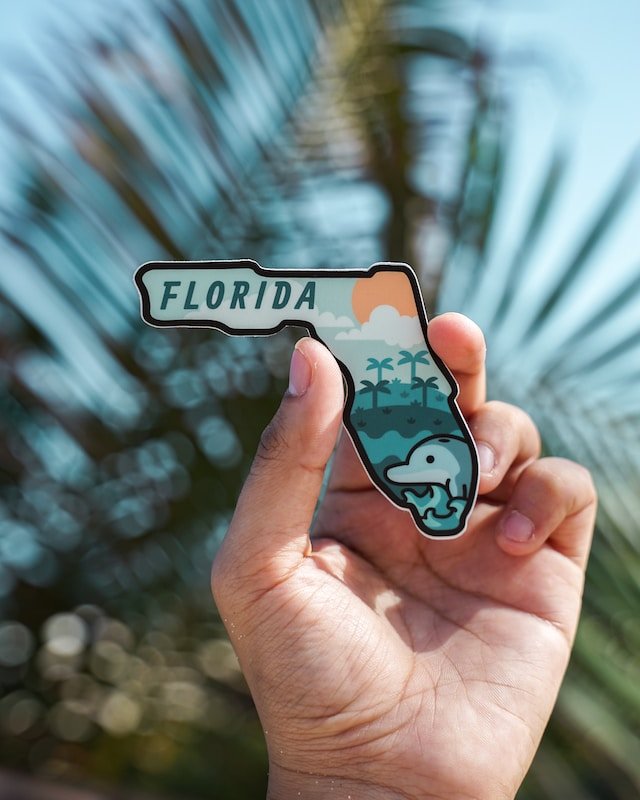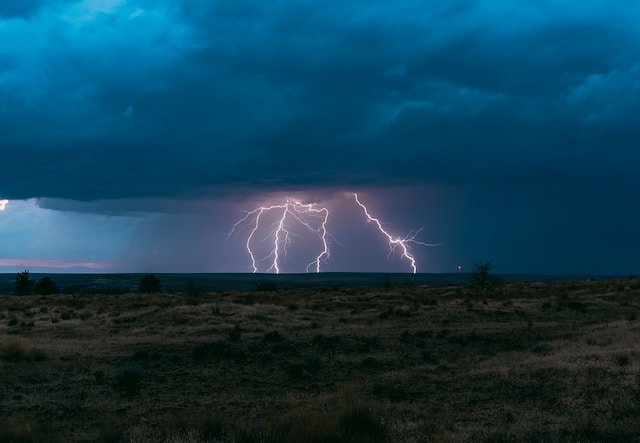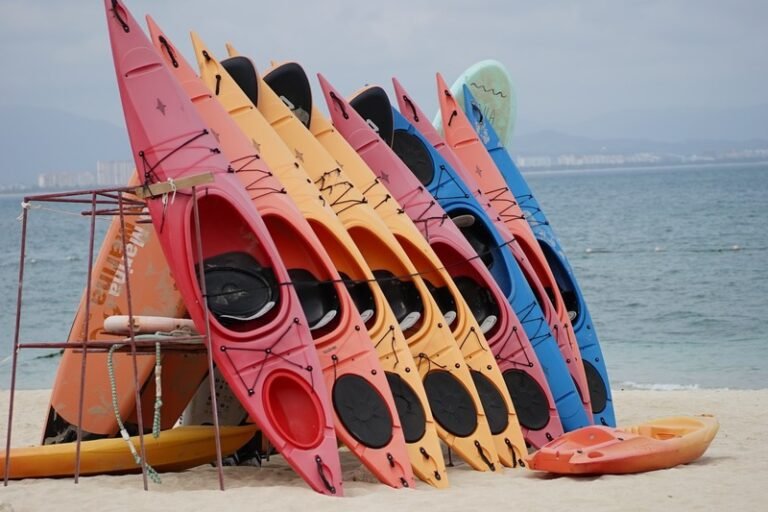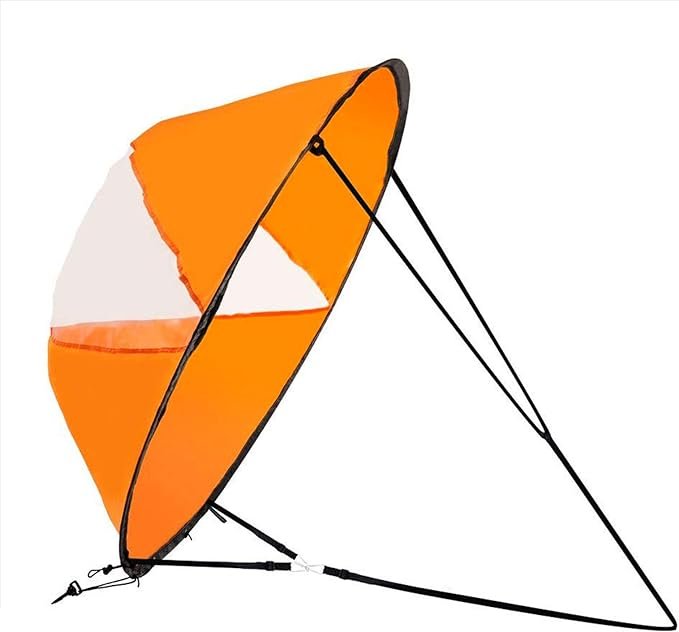Una guía detallada para practicar kayak de noche
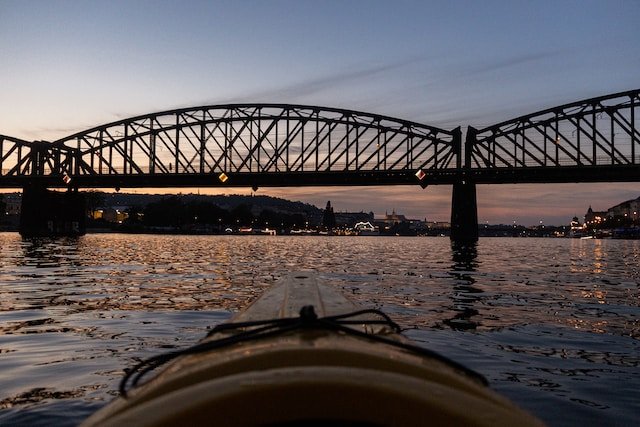
Guía de kayak nocturno
Cuando la mayoría de la gente piensa en kayak, se imaginan remando en un cuerpo de agua de su elección durante el día. El hecho de que estés leyendo este artículo demuestra que quieres verificar este hecho, quieres estar seguro de poder disfrutar de tu deporte favorito sin importar si es de día o de noche.
Hacer kayak de noche es realmente posible y, como puedes imaginar, es bastante diferente a hacerlo durante el día. Por un lado, la mayoría de la gente se retira por la noche, por lo que probablemente estarás solo en el agua, sin multitudes que estropeen la magia.
Pescar es más divertido de noche y las estrellas, la luz de la luna o las luces de la ciudad que se reflejan en el agua ofrecen una hermosa vista. Te enamorarás de la naturaleza nuevamente.
Sin embargo, antes de empezar a navegar en kayak por la noche, debes familiarizarte con lo que eso implica. Es importante que aprendas las reglas.
Sumérgete en este artículo donde se explica todo lo que necesitas saber sobre el kayak de noche para prepararte para una sesión de remo divertida y segura en el agua.
¿Es legal hacer kayak de noche?
La pregunta de si navegar en kayak de noche es legal o no es una pregunta que se plantean habitualmente los kayakistas que desean ampliar sus horizontes en kayak y disfrutar de los encantos del agua cuando el sol ya no está en el cielo y el agua está libre de la multitud.
El kayak nocturno puede ser una experiencia pacífica y serena. También puede ser peligroso y, por lo tanto, no se recomienda sin la preparación y el equipo de seguridad adecuados. ¿Es legal navegar en kayak de noche?
En general sí, pero existen algunas excepciones que varían según el estado. Cualquier parque estatal o nacional que prohíba el kayak nocturno lo hará probablemente porque puede ser inseguro y perjudicial para la vida silvestre, pero considerando todo, debería poder navegar en kayak por la noche sin generar problemas por parte de las autoridades.
Como las leyes relativas al kayak nocturno varían de un estado a otro, depende de usted consultar las leyes de su estado para asegurarse de no violarlas.
La Guardia Costera, que regula las actividades de navegación en todos los estados, clasifica los kayaks como embarcaciones de propulsión humana o de remos y, como tales, se espera de ellos una iluminación estándar.
La Guardia Costera espera que cualquier persona que navegue en kayak de noche tenga las mismas luces que un velero o una antorcha o linterna si no puede hacerlo. La regla se establece a continuación.
“Un buque a remos podrá exhibir las luces prescritas en esta regla para los buques de vela, pero si no las tiene, exhibirá una luz blanca todo alrededor o tendrá a mano una linterna eléctrica o linterna encendida que muestre una luz blanca que será exhibido con tiempo suficiente para evitar una colisión”.
Además de esta regla, existen leyes y precauciones de seguridad específicas en cada estado para guia kayak por la noche. Depende de usted estudiarlos y adherirse a ellos.
¿Es seguro hacer kayak por la noche?
Como todos sabemos, tener permiso para hacer algo y estar seguro mientras lo hace son dos cosas diferentes. Por lo tanto, no debería sorprendernos saber que Hacer kayak de noche es intrínsecamente peligroso, incluso más que navegar en kayak durante el día.
Los peligros habituales de navegar en kayak durante el día incluyen deshidratación, ahogamiento, zozobra, hipotermia y mal tiempo, pero la noche agrega condiciones de poca luz, mala visibilidad y una alta probabilidad de desorientarse a la lista.
Digo esto no para asustarte del kayak nocturno, sino para ayudarte a prepararte. Saber qué esperar en su viaje y no subestimar los peligros de sus esfuerzos es el primer paso para garantizar su seguridad en el agua.
El principal problema de navegar en kayak de noche es la mala visibilidad. El sentido principal de un kayakista es la vista. Depende de él para navegar con seguridad en su barco y la noche trae consigo sus encantos las condiciones de poca luz.
Garantizar su seguridad implica entonces invertir en ver su entorno y hacerse ver fácilmente. Nunca asuma que otras personas en el agua seguirán las precauciones de seguridad. Síguelas siempre para todos y evitarás accidentes.
El siguiente problema al navegar en kayak de noche es la desorientación. Notarás que una vez que se pone el sol, incluso una zona muy familiar comienza a parecer extraña, y si no se tiene cuidado, podrías desorientarte y alterar tu rumbo.
Corregir un rumbo alterado por la noche es más difícil de lo que parece, por lo que conviene evitar este problema por completo. Preste más atención a su entorno durante la noche que durante el día para garantizar su seguridad.
Lo último que debes tener en cuenta es la vida silvestre. Antes de navegar en kayak en un cuerpo de agua, ya sea de día o de noche, debes ocuparte de saber qué seres vivos compartirán el agua contigo.
Debes tener especial cuidado durante la noche, ya que los animales que son sedentarios durante el día pueden ser más activos durante la noche (como los caimanes), y no querrás enfrentarte a un animal sin poder ver tu entorno correctamente.
Reglas que rigen el kayak nocturno
Independientemente de si navega en kayak de día o de noche, las reglas de seguridad para navegar en kayak permanecen sin cambios.
Sea consciente de su entorno, esté preparado para emergencias, consulte el pronóstico del tiempo antes de planificar su viaje, etc. Naturalmente, navegar en kayak de noche requiere reglas de seguridad adicionales, y esas reglas se analizan a continuación.
Regla 1: asegúrese de que otros puedan verlo fácilmente
Como ya sabrás, el mayor problema de navegar en kayak de noche es la mala visibilidad, por lo que asegurarte de que otros puedan verte es un paso importante para prevenir colisiones. Puedes hacerte visible de dos maneras, usando luces y/o sonido del kayak.
Si opta por utilizar el sonido como forma de ser visto, querrá utilizar una bocina marina o un silbato de largo alcance. Solo asegúrese de que el índice de decibelios sea de al menos 120 dB o más, y estará listo para comenzar.
La idea es hacer suficiente ruido para que cualquier persona que se acerque a usted sepa rápidamente que hay alguien ahí afuera. Si no puede permitirse una luz que sea lo suficientemente brillante y siente que debe navegar en kayak esa noche, no debe pasar por alto el uso del sonido para ser visto.
Si prefieres la luz como método para ser visto, el luz para kayak que utilice debe estar aprobado por la Guardia Costera.
Puede utilizar una luz blanca de 360 grados montada en un poste de su kayak para hacerse visible para los demás o, como mínimo, se requiere una linterna para su seguridad. Asegúrese de que lo vean fácilmente en el agua y los accidentes estarán lejos de usted.
Tener luces de emergencia también es una parte importante para ser visto. Invierte en una luz intermitente o estroboscópica que se activará cuando tengas problemas para garantizar que te encuentren.
También debes estar familiarizado con las luces de los barcos. Para ayudar a que las embarcaciones sean fácilmente visibles, a menudo se emplean luces de navegación rojas y verdes o luces laterales en los kayaks.
La luz roja siempre está colocada a babor (el lado izquierdo), mientras que la luz verde siempre está colocada a estribor (el lado derecho).
Luces laterales de lectura
Saber leer las luces de posición es una habilidad importante que debe dominar cualquier persona que quiera navegar en kayak de noche.
La luz verde siempre está a la derecha, mientras que la luz roja siempre está a la izquierda, por lo que su posición en una embarcación mientras remas de noche te da una idea de la dirección en la que se dirige.
- Si ve luces verdes y rojas en un barco, con la luz roja a su izquierda, el barco se está alejando de usted.
- Si ve luces verdes y rojas en un barco, con la luz roja a su derecha, el barco se está moviendo hacia usted.
- Si ve una luz roja en el costado de un barco delante de usted, el barco se está moviendo de derecha a izquierda.
- Si ve una luz verde en el costado de una embarcación delante de usted, la embarcación se está moviendo de izquierda a derecha.
¿Cuándo deberías encender las luces?
Si sales a hacer kayak cuando ya está oscuro, probablemente ya tengas la luz encendida. Pero si llega al agua antes de que se ponga el sol y comience a oscurecer, es posible que se pregunte cuándo es el momento adecuado para encender las luces.
Debes encender las luces antes de que oscurezca para estar más seguro. Esperar a que oscurezca antes de encender la luz es un riesgo, y navegar en kayak de noche es bastante peligroso sin correr riesgos innecesarios.
Regla 2: asegúrese de poder ver
La siguiente regla es garantizar que puedas ver. Tener buenas luces para kayak puede ayudarte a ser visto, pero no significa necesariamente que podrás ver, especialmente cuando usas luz blanca.
La verdad es que la luz blanca reduce tu capacidad de ver en la oscuridad, por lo que si la luz está mal colocada, tendrás problemas para ver tu entorno. En este sentido, quiero enfatizar el uso de luces suspendidas sobre usted para que pueda ver fácilmente con pocos efectos negativos de la luz blanca.
La verdad es que si utiliza faros o linternas como fuente principal de luz, no solo podría terminar iluminando los ojos de otro navegante y desorientándolo, sino que también corre el riesgo de afectar su capacidad de ver.
Esto se debe a que los reflejos del agua y la superficie de su kayak lo distraerán y, como la luz no es estable, se moverá constantemente a medida que usted se mueve, lo que lo hará más inseguro.
Regla 3: planifique su ruta
Seguramente habrás escuchado que planificar tu ruta en un viaje en kayak es importante, ya te digo que es muy importante por la noche.
Ten en cuenta que uno de los peligros de navegar en kayak de noche es la desorientación, y te tomarás este punto en serio. Planificar su viaje implica trazar un mapa del área en la que navegará en kayak por la noche antes de navegar, de modo que esté seguro de poder encontrar el camino en la oscuridad.
Como medida de seguridad, debes evitar los cuerpos de agua con tráfico para practicar kayak nocturno, especialmente si recién lo estás probando.
Planificar tu ruta no es suficiente, debes asegurarte de cumplir con tu horario. Esto implica tener en cuenta las olas, las corrientes y las mareas, utilizar el GPS, la brújula o los mapas para encontrar el camino y emplear cualquier otra medida de seguridad que sepa que le permitirá llegar sano y salvo a casa.
Si está navegando en kayak en un lugar bastante desierto, por ejemplo, es posible que desee dejar una luz encendida en el punto de partida para que le resulte más fácil encontrar el camino a su regreso.
Regla 4: Traiga equipo de seguridad
El equipo de seguridad le ayudará a mantenerse seguro en el agua. En primer lugar, siempre debes ponerte tu chaleco salvavidas en el momento en que llegues a la orilla y no te lo quites a menos que te vayas. Otros equipos de seguridad incluyen:
- A radio VHF: Esto se recomienda a través de un teléfono inteligente si vas a navegar en kayak en lugares con mala recepción de red. Esto se debe a que estas radios no se ven afectadas porque dependen de satélites. Si no va a navegar en kayak en zonas con mala recepción, un teléfono inteligente le servirá.
- Ropa de repuesto: Para cambiarte después de remar, especialmente si te mojas. Tanto la ropa de repuesto como la ropa de kayak deben estar diseñadas para proporcionar calidez. Recuerda que el aire es más fresco por la noche. Tener una chaqueta impermeable o un suéter a mano también sería muy útil en las noches frías.
- Un botiquín de primeros auxilios: Para tratar heridas leves.
- Comida y agua potable: Para mantener las fuerzas.
- Un hace ruido: Podría ser una bocina de aire o un silbato, es para ayudar a que lo vean.
- Una bolsa seca: Para guardar todos los objetos personales que no quieras que se mojen como tu smartphone, DNI, etc.
- GPS: Para ayudarte a encontrar tu camino si te desvías del rumbo.
- Brújula y mapa: respaldo manual en caso de que la tecnología falle para ayudarte a encontrar el camino.
- Baterías y lámpara de repuesto: para garantizar que pueda ver su entorno y ser visto incluso si algo le sucediera a sus luces originales.
Asegúrese de que todo el equipo de seguridad sea fácilmente accesible. El equipo no será de mucha utilidad si tienes dificultades para acceder a él cuando surja la necesidad.
Precauciones de seguridad para navegar en kayak de noche
A estas alturas ya sabes que navegar en kayak de noche puede ser divertido y peligroso. Cumplir con las precauciones de seguridad es siempre una medida inteligente para garantizar su seguridad, por lo que conocer las precauciones de seguridad es indispensable. Las precauciones de seguridad para el kayak nocturno incluyen:
- Siempre Use su chaleco salvavidas mientras navega en kayak., podría marcar la diferencia entre la vida y la muerte en el agua, especialmente cuando hay un retraso en el rescate.
- Consulta siempre la previsión meteorológica antes de planificar tu viaje. Navegar en kayak de noche es bastante peligroso sin mal tiempo, así que evite riesgos innecesarios. Continúe revisando las actualizaciones del clima periódicamente y abandone el agua si se pronostica mal tiempo.
- Consulta siempre las mareas: si tienes intención de navegar en kayak en aguas muy influenciadas por las mareas (como mares, océanos y aguas salobres), te harás un favor consultando toda la información sobre las mareas mientras planificas tu viaje. Sepa cuándo cambiarán las mareas, cuánto fluctúan y cualquier otro conocimiento importante para garantizar su seguridad. No querrás quedarte varado en el agua por la noche, así que consulta todas las predicciones de mareas.
- Esté consciente de su entorno en todo momento. Esto es muy importante ya que, si bien la luz y el ruido le ayudarán a evitar colisiones con otras embarcaciones, no le protegerán de accidentes con seres no vivos si no presta atención a su entorno. Mientras disfruta de la belleza del kayak nocturno, asegúrese de permanecer alerta y consciente de la seguridad.
- Para ver mejor en condiciones de poca luz, mire aproximadamente a 20 grados del centro hacia los lados de las cosas cercanas. Tome esta precaución en serio si está navegando en kayak en el océano, no sea que aprenda por experiencia que mirar las olas de frente le hará juzgar mal su tamaño y ubicación.
- Reúna información de clubes de remo locales o agencias gubernamentales sobre el clima y el patrón de mareas del cuerpo de agua en el que desea navegar. Notará que le dará una buena idea de qué esperar.
- Si te gusta remar solo por la noche, deberías practicar técnicas de autorrescate. Desea que estas técnicas se conviertan en algo natural, ya que habrá un problema de visibilidad del que preocuparse si se encuentra en problemas. Poder rescatarte a ti mismo también puede mantenerte con vida si estás navegando en kayak en aguas con poco tráfico o si hay un retraso en el rescate.
- Asegúrese de que todas sus luces sean resistentes al agua. No sería bueno quedar sumido en la oscuridad porque las luces se mojan.
- Si es posible, evite cuerpos de agua con presas de baja caída. Estas represas pueden ser bastante difíciles de detectar durante el día, por lo que evitarlas durante la noche es una buena medida de acción. Si el cuerpo de agua de su elección tiene una presa de baja altura, asegúrese de saber dónde está y tome todas las precauciones para evitar toparse con ella en el agua.
- Informe siempre a alguien de sus planes antes de lanzarse al agua. Bríndeles su ruta planificada, la hora estimada de llegada y cuánto tiempo deben esperar antes de hacer sonar una alarma de rescate. Si no tiene familiares o amigos cerca para esperar su llegada, siempre puede dejar su plan de remo en una estación de la Guardia Costera local para que puedan estar atentos y acudir en su ayuda si surge la necesidad.
Navegar en kayak es innegablemente divertido y hacerlo de noche abre una nueva puerta de oportunidades. La tranquilidad de la noche y el reflejo de las luces en el agua se suman al encanto y no puedes evitar enamorarte de la naturaleza nuevamente.
Sin embargo, asumir que puedes practicar kayak por la noche de la misma manera que lo harías durante el día es muy poco realista y una receta para el desastre.
Para iniciarte en el kayak nocturno, debes comenzar en un lugar con el que estés muy familiarizado remando durante el día para que la navegación sea menos desafiante. En tus primeros intentos, puedes simplemente remar un poco y sentir lo que es diferente.
La seguridad al navegar en kayak de noche es de suma importancia y no se puede dejar de enfatizar. La regla de oro es: Ver y Ser Visto.
Asegúrate de que puedas ver a los demás y que ellos también puedan verte a ti. Siga las reglas y precauciones de seguridad y estará a salvo. ¡Diviértete en el agua!



